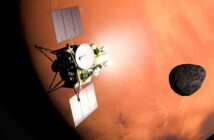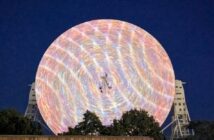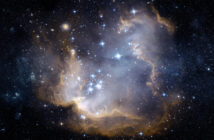An international team of astronomers has detected a planet orbiting our nearest star, Proxima Centauri. The research, which has been published in Nature to a global audience, suggests the planet is at just the right distance from Proxima Centauri for liquid water to exist on its surface and has the potential to support life.
Only discovered 100 years ago, in 1915, by Scottish astronomer Robert Innes, Proxima Centauri is over four-light years from the Solar System, and is referred to by astronomers as a red dwarf, due to the predominantly red light being emitted by it as it is much cooler than the Sun.
‘One of the most important scientific discoveries’
Supported by the European Southern Observatory (ESO) at La Silla, Chile, the team discovered Proxima b with a method used by astronomers, which measures the small wobble a planet causes the star it orbits to perform. This occurs as a result of the gravity of the orbiting planet pulling on the star, which, itself, orbits around a central point.
Postdoctoral Researcher at The Open University, Dr John Barnes, was instrumental in establishing that the observed ‘wobble’ of Proxima Centauri was caused by a nearby planet. He said:
Once we had established that the wobble wasn’t caused by star spots*, we knew that there must be a planet orbiting within a zone where water could exist, which is really exciting. If further research concludes that the conditions of its atmosphere are suitable to support life, this is arguably one of the most important scientific discoveries we will ever make.
Academics at the OU significantly contribute to space science research in the UK space sector. The OU has developed technologies that have supported international projects led by ESA, ESO and NASA, including ExoMars, Rosetta, and the Mercury Imaging X-Ray Spectrometer.
Find out more about space science research at the OU.
Why is this research so important?
Senior Lecturer, Dr Carole Haswell, talks objectively about the research her colleague, John Barnes, has collaborated on, and focuses on its wider significance …
Academics at the OU significantly contribute to space science research in the UK space sector. The OU has developed technologies that have supported international projects led by ESA, ESO and NASA, including ExoMars, Rosetta, and the Mercury Imaging X-Ray Spectrometer.
Find out more about space science research at the OU.
*Star spots, similar to the sunspots visible on the Sun, could cause an apparent wobble as the star spins. So there may be an apparent wobble even if a planet is not present. Once star spots form, they are usually fixed in position on the star and last for many days or months. As the star spins, the spots rotate into and out of view thus creating a periodic apparent wobble of the star. Research by Dr John Barnes demonstrated that the wobble was caused by a planet and ruled out the star spot explanation.
John Barnes was supported by the Science and Technology Facilities Council under the grant ST/L000776/



